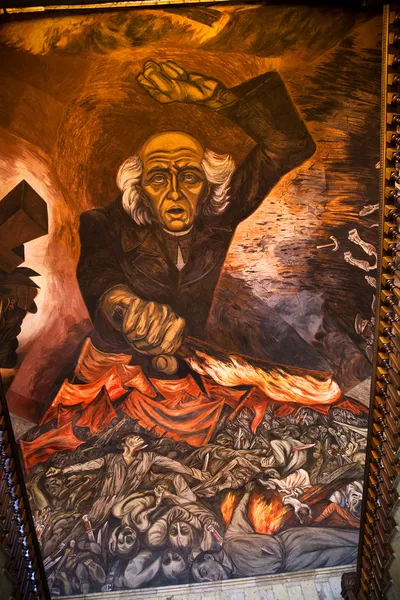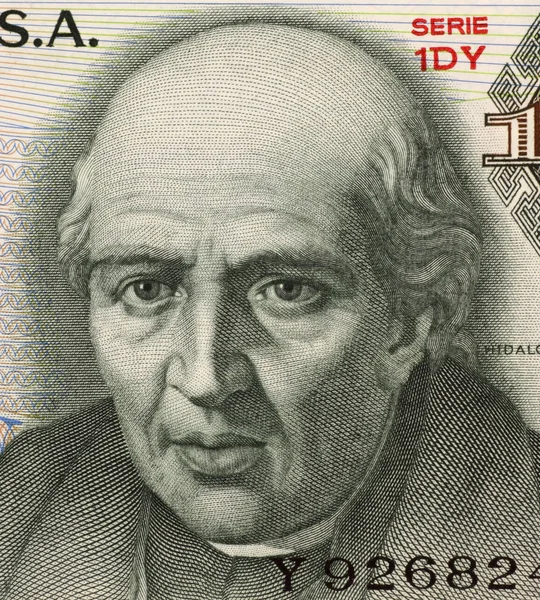México: September the month of the motherland /Septiembre mes de la patria
¿Qué tal amigos?,
Buenos días, buenas tardes y buenas noches.
English version
In this 5 minutes on the middle of the week we are goingo to talk about
September the month of the motherland
Why is it called the month of the motherland?
Because there are several historical dates in this
month. The beginning of the struggle for the independence of Mexico (September
16) is celebrated with great joy, the date of the consummation of the
independence (September 27) is not so much remembered.
Here we will take a look at national history to review
some cognates:
We see that the words ending in CION- are TION in
English.
So these days we are going to listen:
Revolución
Revolution
Emancipación Emancipation
Consumación Consummation
Disolución Dissolution
Consolidación Consolidation
Organización Organization
So we would continue with many words finished in CION,
but let's get down to business, to the revolution of independence, a process
that was long and difficult and this year is the 210th anniversary:
The Revolution began on September 16, 1810, with two
parents (priests) Hidalgo and Morelos.
The process of 1810 was popular:
Popular a word that is written the same in Spanish and
English but pronounced differently.
How are those leaders of the 1810 independence
revolution?
Miguel Hidalgo y Costilla, also called El cura Hidalgo
was born in Guanajuato (1753) and died in Chihuahua, (1811).
From his church in Dolores he had been associated with
people of advanced ideas who wanted independence from Spain, also with many
peasants and indigenous people.
Was Hidalgo an educated priest?
He was a very educated priest, he spoke six languages
(Spanish, French, Italian, Tarasco, Otomi and Nahuatl) and in his library he
had French works, forbidden by the Catholic Church.
In an attempt to improve the living conditions of the
people of the church, he took care of growing vines, raising silkworms and
promoting beekeeping, (beekeeping)
He also promoted brick kilns and a china factory, as
well as many handicrafts. With this he won the support of his entire community
who followed him in the revolution
He gives the Grito de Dolores, promoting the
separation of Spain, at that time invaded by Napoleon, right?
His movement is popular, followed not only by sectors
of merchants and landowners but also by peasants and indigenous people, this
was not common in other Hispanic American uprisings.
What happened?
As we said, the Grito de Dolores is followed by
merchants and also by the people. The movement failed and Hidalgo was shot the
following year. Other leaders like Morelos continue. And in 1821 they obtain
the Independence but not anymore with a popular movement, but very
conservative, with an emperor: Iturbide.
 |
| Hidalgo - Mural de Orozco en Palacio de Gobierno, Guadalajara |
As you can see 11 years of wars and much violence that
later continues with other changes and more struggles.
Here, too, we use other cognates:
Movimiento-
movement
Obtener to
obtein
Violencia- violent
Líder- leader
Are there other dates in September? We already
mentioned the revolution and the consolidation of independence.
Yes, September 2 is the "President's Day" on
which the government report is given, on the 14th the national anthem was sung
for the first time in the Santa Ana theater in CDMX and on the 13th it is the
memory of the Children Heroes. You can read and listen about them in
SpanishUp2you, we leave you the link - https://spanishuptoyou.com/index.php/21-history-and-culture/93-los-ninos-heroes
And we have some more cognates:
Gobierno government
Héroes heroes
Y….. preparar to prepare
Shall we talk about “preparar”?
No, but there are special meals for this month, one of
the best dishes in Mexico, great!
Stay tuned on Facebook because we will be preparing it
soon and we will leave you the recipe. You can also see it on our You Tubechannel, this recipe is simply fabulous
Thank you very much for listening so far
You know the 16th to shout, from your homes, but very
loudly: Viva Mexico!
See
you soon.
Bye-bye
 |
| Parroquia de la Navidad, Dolores |
Septiembre el mes de la patria
¿Por qué se lo llama el mes de la patria?
Porque hay varias fechas históricas en este
mes. Se celebra con gran alegría el inicio de la lucha por la independencia de
México (16 de septiembre), no se
recuerda tanto la fecha de la consumación de la independencia (27 de
septiembre).
Aquí vamos a tomar la historia nacional para
revisar algunos cognados:
Vemos que las palabras terminadas en CION- son
TION en inglés.
Por lo que en estos días vamos a escuchar:
Revolución
Revolution
Emancipación Emancipation
Consumación Consummation
Disolución Dissolution
Consolidación Consolidation
Organización Organization
Así seguiríamos con muchas palabras terminadas
en CION, pero vamos a lo nuestro, a la revolución de independencia, un proceso
que fue largo y difícil y este año es el 210 aniversario:
Comienza la Revolución un 16 de septiembre de
1810, con dos padres (curas) Hidalgo y Morelos.
El proceso de 1810 fue popular:
Popular una palabra que se escribe igual en
español e inglés pero se pronuncia diferente.
¿Cómo son esos líderes de la revolución de independencia de
1810?
Miguel Hidalgo y Costilla, también llamado El
cura Hidalgo nació en Guanajuato (1753)
y murió en Chihuahua, (1811).
Desde su iglesia de Dolores, se había
relacionado con las personas de avanzadas ideas que querían la independencia de
España, también con muchos campesinos e indígenas.
¿Era un cura educado Hidalgo?
Era un cura muy educado, hablaba seis lenguas
(español, francés, italiano, tarasco, otomí y náhuatl) y en su biblioteca tenía
obras francesas, prohibidas por la iglesia católica.
En un intento de mejorar las condiciones de
vida de las personas de la iglesia se ocupó del cultivo de viñas, de criar
gusanos de seda y de fomentar la apicultura, (la cría de abejas)
Además promovió los hornos de ladrillos y una
fábrica de loza, así como muchas artesanías. Con esto se ganó el apoyo de toda
su comunidad que lo siguió en la revolución
Da el Grito de Dolores, promoviendo la separación de España,
en ese momento invadida por Napoleón ¿verdad?
Su movimiento es popular, lo siguen no solo los
sectores de comerciantes y hacendados sino también los campesinos y los
indígenas, esto no fue común en otros levantamientos hispanoamericanos.
¿Qué pasó?
Da el Grito de Dolores, como dijimos, lo siguen
sectores comerciantes y también personas del pueblo. El movimiento fracasa e
Hidalgo es fusilado al año siguiente. Continúan otros líderes como Morelos. Y en
1821 obtienen la Independencia pero ya no con un movimiento popular, sino muy
conservador, con un emperador: Iturbide.
Como ven 11 años de guerras y mucha violencia que luego
continúa con otros cambios y más luchas.
Aquí, también, usamos otros cognados:
Movimiento-
movement
Obtener to obtain
Violencia- violent
Líder- leader
¿Hay otras fechas en septiembre? Ya mencionamos la revolución
y la consolidación de la independencia.
Sí el 2
de septiembre es el “Día del Presidente” en el que se da el informe de
gobierno, el 14 se cantó por primera vez el himno Nacional en el teatro Santa
Ana en CDMX y el 13 es el recuerdo de los Niños Héroes. Pueden leer y escuchar
sobre ellos en SpanishUp2you, les dejamos el link - https://spanishuptoyou.com/index.php/21-history-and-culture/93-los-ninos-heroes
Y tenemos algunos cognados más:
Gobierno
government
Héroes heroes
Y…..
preparar to
prepare
¿Hablamos de preparar?
No, pero
es que hay comidas especiales para este mes, uno es de los platos mejores de
México., ¡magnífico!
Estén atentos al Facebook pues lo vamos a preparar pronto y
les dejaremos la receta. Podrán verla también en nuestro canal de You Tube,
esta receta es sencillamente fabulosa
Muchas
gracias por escuchar hasta aquí
Ya saben
el 16 a gritar, desde sus casas, pero bien fuerte: ¡Viva México!.
Nos
vemos
Chau
 |
Parroquia de la Navidad, Dolores |



Comentarios
Publicar un comentario